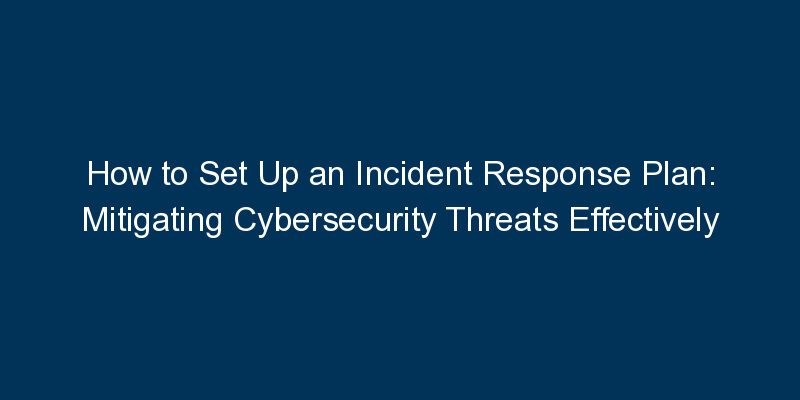Setting up an incident response plan is a fundamental step in cybersecurity readiness, enabling organizations to respond swiftly and effectively to security incidents. This blog provides a comprehensive guide on how to set up an incident response plan, enhancing the resilience of businesses against cyber threats.
Introduction:
Cybersecurity incidents are inevitable, and having a well-defined incident response plan is critical for minimizing damage and ensuring a prompt recovery. This guide explores the key steps in setting up an incident response plan to address security breaches effectively.
Key Steps to Set Up an Incident Response Plan:
- Define Incident Response Team Roles: Establish a dedicated incident response team with clearly defined roles and responsibilities. This team should include individuals with expertise in cybersecurity, IT, legal, and communication.
- Identify Critical Assets and Data: Identify and prioritize critical assets and data within the organization. Understanding what is most valuable allows the incident response team to focus on protecting high-priority assets during an incident.
- Develop an Incident Response Policy: Develop a comprehensive incident response policy that outlines the organization’s approach to handling security incidents. This policy should align with regulatory requirements and industry best practices.
- Create an Incident Response Plan (IRP): Develop a detailed incident response plan that outlines the step-by-step procedures to be followed during a security incident. This plan should cover detection, containment, eradication, recovery, and lessons learned.
- Establish Communication Protocols: Define communication protocols for notifying internal and external stakeholders during a security incident. This includes internal teams, executive leadership, customers, regulatory bodies, and law enforcement, as appropriate.
- Conduct Regular Training and Drills: Provide regular training to the incident response team and conduct simulated drills to test the effectiveness of the incident response plan. This ensures that team members are well-prepared to handle real-world incidents.
Conclusion:
Setting up an incident response plan is a proactive measure to mitigate the impact of cybersecurity threats. By following the steps outlined in this guide, organizations can establish a robust incident response capability, reduce response times, and minimize the consequences of security incidents.






















Comments